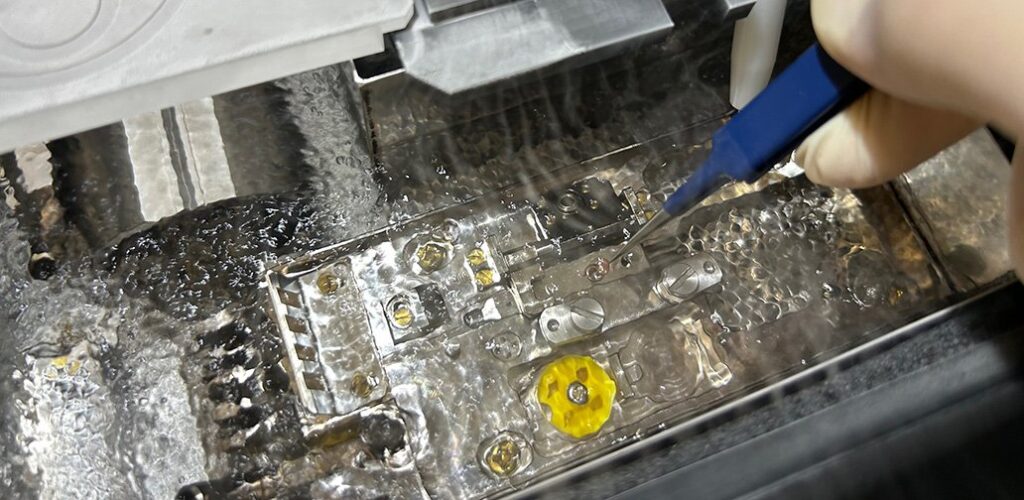
Cryo-transmission electron microscopy (cryo-TEM) has long been a cornerstone in the examination of biological samples, offering insights into their size, shape, and dispersion within a frozen solvent. However, until now, a critical aspect—elemental composition—remained elusive in organic samples. Researchers at Tohoku University have developed a pioneering technique that promises to change this landscape, as detailed in their recent publication in Analytical Chemistry on July 31, 2025.
This new method, which utilizes cryo-EELS/EF-TEM, allows for simultaneous visualization of both structure and elemental distribution of nanomaterials in frozen solvents. This advancement is particularly significant for organic and bio-related materials, providing a high-resolution analysis that was previously unattainable.
Overcoming Traditional Limitations
Traditional energy-filtered TEM (EF-TEM) methods, which use electron energy loss spectroscopy (EELS), have been fraught with challenges. These include potential damage to samples and image drift, leading to blurred results. Moreover, conventional techniques have been predominantly applied to metals or large-area samples rather than the delicate organic nanomaterials.
The breakthrough from Tohoku University addresses these issues head-on. By developing a novel elemental mapping technique, the researchers have successfully mitigated the limitations of previous methods. Their approach includes a new imaging method combining the 3-window method for precise background correction with drift compensation techniques. This innovation is complemented by a new program for the “ParallEM” electron microscope control system, facilitating easy control of energy shift during imaging.
Significant Findings and Applications
Using this advanced technique, the research team was able to visualize silicon distribution in silica nanoparticles within a frozen solvent, capturing both their structure and dispersion. Notably, the smallest particle size detectable via this elemental mapping was around 10 nm, marking a significant leap in resolution capabilities.
Furthermore, the method was applied to hydroxyapatite particles, a primary component of bones and teeth, revealing the distributions of calcium and phosphorus—key biological elements. This capability opens new avenues for research across various fields, including biomaterials, medical materials, food, catalysts, and inks.
“This technique is expected to enable advanced analysis of various materials, contributing to research across fields from life sciences to materials science,” the research team noted in their publication.
Implications for Future Research
The implications of this development are vast. By enabling more detailed analysis of nanomaterials, this technique could revolutionize how researchers approach the study of complex biological and organic systems. It holds potential for significant advancements in the understanding of biomaterials, which could lead to innovations in medical applications and beyond.
Moreover, the ability to accurately map elemental distributions at such a fine scale could enhance the development of new materials with tailored properties, impacting industries ranging from pharmaceuticals to electronics.
Looking Ahead
The research, led by Daisuke Unabara, Yohei K. Sato, Tasuku Hamaguchi, and Koji Yonekura, represents a significant step forward in the field of electron microscopy. As the technique is further refined and adopted, it is poised to become an invaluable tool in both academic and industrial research settings.
As scientists continue to explore the capabilities of this new method, the potential for groundbreaking discoveries in the composition and behavior of nanomaterials remains vast. The integration of this technique into various research domains could usher in a new era of material science and biological research.
For more detailed insights, the full study can be accessed in Analytical Chemistry, offering a comprehensive overview of this innovative approach and its potential applications.





